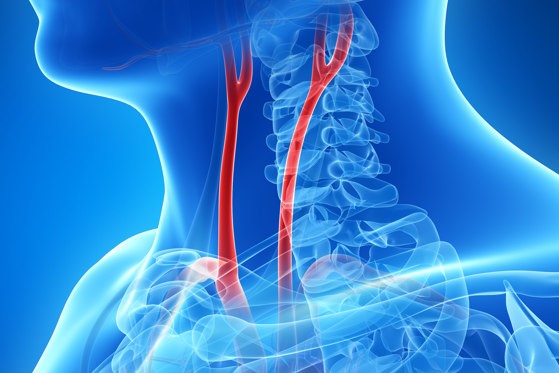
Carotid angioplasty and stenting: what are we talking about?
Carotid angioplasty is a non-invasive radiological intervention procedure to remove obstructions in the carotid arteries, the two main arteries in the neck that carry blood from the heart to the brain
These two arterial vessels can narrow (stenosis) mainly due to atherosclerosis, a disease characterised by the accumulation of fatty plaques, reducing or completely cutting off the flow of blood to the brain, with a high risk of stroke.
With the same procedure performed by introducing small cannulas into the blood vessels under local anaesthesia, metal cylinders (stents) can also be placed to preserve the dilation of the carotid arteries, preventing them from narrowing and closing again.
ECG EQUIPMENT? VISIT THE ZOLL BOOTH AT EMERGENCY EXPO
What is carotid angioplasty and stenting?
Carotid angioplasty and stenting are recent procedures, but already well established in medical practice.
Replacing surgery, they allow the carotid arteries to be cleaned and cleared of fatty deposits that obstruct the passage of blood and can reduce the flow of oxygen to the brain, causing the cerebral infarction also known as a stroke.
High cholesterol, high blood pressure and smoking are the most common causes.
As well as closing up due to the build-up of atherosclerotic plaques, dangerous blood clots can also form in the carotid arteries, occluding the blood vessel in which they have formed or moving around and blocking passage to other parts of the blood system.
The procedure involves inserting a thin cannula (catheter) into the femoral artery in the groin.
The procedure is carried out under local anaesthesia, so that the patient can report his or her feelings during the procedure. The catheter is guided by X-ray images to the point occluded by the plaques.
Next, the diseased tract is dilated and a small wire mesh tube (stent) made of material compatible with the human body is placed.
The stent is released into the narrowing part of the blood vessel to protect the artery walls and prevent them from closing again.
The total duration of the procedure is approximately 1-2 hours. Discharge normally takes place the day after the procedure.
How much hospitalisation is required for an angioplasty?
The procedure is performed under local anaesthesia.
The patient remains awake throughout the procedure and is able to communicate any feelings to the medical staff.
During the procedure the anaesthesiology staff is always present to monitor all the parameters related to the procedure.
What are the benefits of carotid angioplasty and stenting?
As with all medical procedures, carotid angioplasty has a risk profile that is weighed against the benefits of the procedure, i.e. reducing a high risk of stroke or thrombosis.
Angioplasty is indicated if the stenosis exceeds 75% of the volume of the blood vessel or if the patient is at risk of stroke or has already suffered a stroke.
Angioplasty is an alternative treatment to surgery (arterial endarterectomy) in cases where patients are unable or unwilling to undergo surgery.
There are risks linked to the possible detachment of fragments of atherosclerotic plaques that enter the bloodstream and reach the brain, causing a transient ischaemic attack (2-3% of cases) or ischaemic stroke (1.2% of cases).
This is prevented by the introduction of special barriers (called ‘filters’) that allow the waste taken during carotid cleaning to be transported outside.
Is it painful or dangerous?
The treatment is painless because it is performed under local anaesthesia.
The most serious complications are transient ischaemic attack and ischaemic stroke.
Much rarer are breathing difficulties, irregular heartbeats, loss of consciousness.
In 1% of cases there are minor reactions such as sneezing or nausea and a temporary worsening of kidney function, linked to the use of the contrast medium for guiding the catheter, which is gradually expelled by drinking plenty of water in the hours following the operation.
Who can undergo angioplasty treatment?
Candidates are selected in accordance with medical and radiological criteria to identify the characteristics that make angioplasty more appropriate and effective, but equally safe, compared to surgical treatment.
Follow-up
After the angioplasty, the patient must remain in bed and rest for 12-24 hours during which time his condition is constantly monitored.
In the following months, further checks are planned to exclude the likelihood of restenosis, i.e. that the blood vessel has become narrower again.
Preparation for the angioplasty procedure
Before the procedure, the patient undergoes a thorough examination, which includes the collection of all data concerning his health and that of his close family.
Examinations to assess the condition of the arteries are performed: carotid ultrasound, and Angio-CT of the neck vessels.
Before the operation, the patient is informed about what he can eat and drink and until when.
If the patient is taking medication, the medical staff will indicate which, if any, should be discontinued, especially if it is diabetes medication or anti-platelet drugs.
Read Also:
Abdominal Aortic Aneurysm: What It Looks Like And How To Treat It
Coronary Angiography: What It Is And What It Is For


